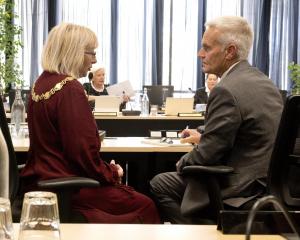
Also now publicly released is the voting from the non-public part of a meeting this week and some clarity about what the council has decided to do.
Councillors have not yet committed themselves to unequivocal backing for groyne reinstatement, but the council did vote 9-5 on Tuesday to try to gain approval through an avenue that would not require resource consent and which would be relatively inexpensive.
This could help explain the re-emergence of the 1919 design, which also features on a website run by Dunedin Mayor Jules Radich, who has argued "it is relatively straightforward to repair the existing groyne".
It was argued in 1919 by prominent engineer Frederick Furkert that erosion stopped after groynes were constructed between 1902 and 1906 and recommenced once they fell into disrepair.
Double-row groynes were deployed in 1920 after advocacy from a Dunedin city engineer, but a single line of piles is proposed now.
The city council is at this stage seeking to avoid having to apply for a resource consent to make the case for reinstating the groyne.
How they voted
The motion: That the council directs staff to proceed with an application for a certificate of compliance for reinstatement of the St Clair groyne from the Otago Regional Council and if granted proceed with reconstruction in the most cost-effective manner.
For (9): Mayor Jules Radich, Crs Sophie Barker, Kevin Gilbert, Carmen Houlahan, Cherry Lucas, Mandy Mayhem, Lee Vandervis, Brent Weatherall, Andrew Whiley.
Against (5): Crs David Benson-Pope, Christine Garey, Marie Laufiso, Jim O’Malley, Steve Walker.













